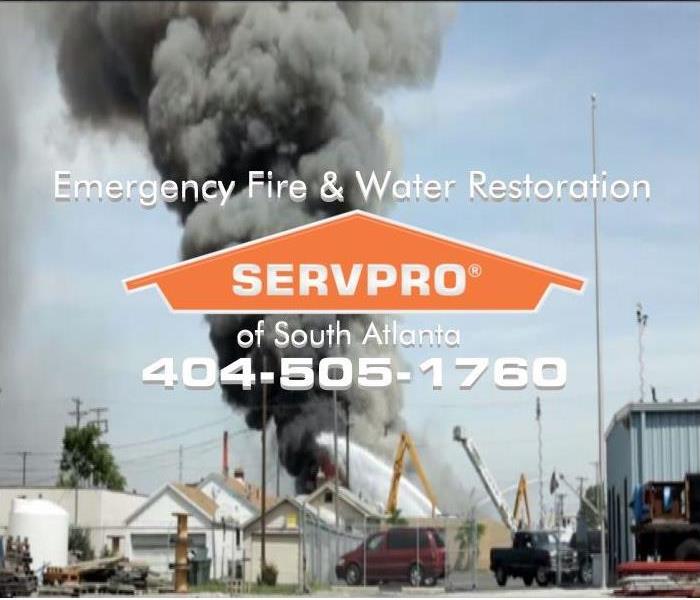Different Types of Smoke and Smoke Damage
4/3/2020 (Permalink)
 If you or someone you know has recently suffered fire damage to their home or business, call SERVPRO of South Atlanta.
If you or someone you know has recently suffered fire damage to their home or business, call SERVPRO of South Atlanta.
No two properties that are damaged by smoke are the same. There are many different categories of smoke damage that are caused primarily by two different types of smoke, wet and dry. The type of smoke you have in your home, will determine the type of soot residue that is left behind after a fire and subsequently the techniques and types of cleaning products used to restore your property.
SERVPRO of South Atlanta’s employees are fully trained and have ample experience in fire cleanup and restoration. They will help you make the best educated decisions concerning the restoration of your property and will explain the SERVPRO’s processes every step along the way. We understand the different types of smoke damage and how to properly handle each one. Before we begin the restoration process, we will assess the damage to your home and determine what type and extent of smoke damage is present. We will also survey the various types of materials that have been damaged, as each one will require a different type of cleaning and/or restoration. The following are a few lesser known facts about smoke damage that you may not be aware of:
- Smoke will flow around plumbing pipes traveling through different floors of your home.
- Hot smoke will find cooler areas of your home, so you may have smoke or soot damage in areas that you might not think are affected.
- Smoke will settle on surfaces, particularly horizontal surfaces, and touching soiled or soot covered surfaces can cause smoke smudging which can be difficult to clean.
- Limit travel in-and-out of areas affected by smoke damage to limit secondary transfer and limit non-affected area exposure.
- If you are going to attempt to clean smoke damage start in an inconspicuous area in case your attempt is unsuccessful.
Various Types of Smoke Damage
- Wet Smoke Damage: This smoke has a low heat, it smolders, has a pungent odor, is sticky and will smear easily. It will create “smoke webs” which are harder to clean. Examples of materials that can produce wet smoke include plastics and rubbers.
- Dry Smoke Damage: This type of smoke is fast burning and has high temperatures. Examples of materials that will produce dry smoke include wood and paper products.
- Protein Fire Residue: This residue is not produced by the actual fire, but from materials that have evaporated. It is virtually invisible but will discolor varnishes and paint. A protein fire has a very pungent and recognizable odor.
How to Choose the Appropriate Fire Extinguisher for Your Home
Make sure you are aware of the location of each fire extinguisher in your home. They should also be easily accessible and well maintained. This list will help guide you in determining which specific type of fire extinguisher you may need in different parts of your home.
- Class A - This type of extinguisher is the most common. It can be used to put out ordinary fires that involve items such as clothing, paper, wood, rubber and many plastics.
- Class B - This type of extinguisher is used on flammable liquid fires, such as grease, oil and gasoline.
- Class C - This type of extinguisher is used for fires that involve any type of electrical equipment, such as tools, tv’s or appliances.
- Class D - This type of extinguisher is used on flammable metals. These are typically found in factories.
- Class K - These extinguishers are generally used in commercial kitchens. They can be used to put out fires that involve vegetable oils, animal oils or any other cooking oils and fats.
*For more information on choosing the right fire extinguisher check out this related article form the U.S Fire Administration “Choosing and Using Fire Extinguishers”
Regardless of the type of fire and/or smoke damage you may, unfortunately, have in your home, SERVPRO of South Atlanta will be there to assist you along the way. We are here for you 24 hours a day, 365 days a year. Let us be your trusted restoration company to restore your home “Like it never even happened.” Contact us today!






 24/7 Emergency Service
24/7 Emergency Service